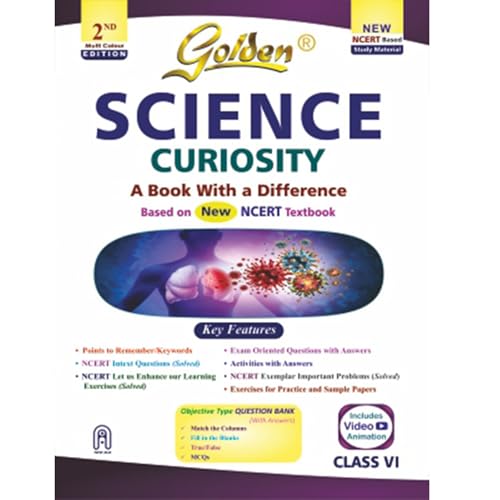The Class 6 Science chapter 8 A Journey through States of Water takes us through a fun and thoughtful journey exploring how water changes its state through everyday observations and experiments.
Have you ever wondered why ice melts into water or how wet clothes dry under the sun? Water is all around us—in the air we breathe, the oceans, the rivers, and even in our bodies. In this chapter, we begin an exciting journey to explore the different forms (or states) of water—solid, liquid, and gas.
By observing everyday things like melting ice, water droplets on a cold glass, or clouds in the sky, we will understand how heating and cooling can change water from one state to another.
Through fun activities and simple experiments, you will learn about evaporation, condensation, and the water cycle that keeps water moving across the Earth.
Get ready to discover how water behaves and why it is one of the most amazing substances on our planet!
Class 6 Science chapter 8 Worksheet
What You Will Learn
- Water exists in three states – solid (ice), liquid (water), and gas (water vapour).
- These states are interchangeable through heating and cooling.
- Concepts of evaporation, condensation, melting, freezing.
- Factors that affect evaporation speed.
- Importance of water conservation and the water cycle.
Download our A Journey through States of Water worksheet today and unlock a door to success.
Also download:
Class 6 Hindi Worksheet with Answers
Science Worksheets for Class 6
Ganita Prakash Class 6 Solutions
A Journey through States of Water Notes
Ice and Water – Same Substance?
- Ice melts into water.
- Water and ice are the same substance in different states.
- Water = liquid, ice = solid
Where Does Water Go? (Evaporation)
- Puddles, wet utensils, and water on floors dry up due to evaporation.
- Evaporation is the process where water turns into vapour.
- It happens even at room temperature.
Water Droplets on Cold Glass (Condensation)
- When water vapour in air touches a cold surface, it forms water droplets.
- This process is called condensation.
The Three States of Water
- Property Ice (Solid) Water (Liquid) Vapour (Gas)
- Shape Fixed No fixed shape No fixed shape
- Ability to flow No Yes Yes
- Spreading No Spreads to some extent Spreads completely
Changing States of Water
- Melting: Ice → Water (add heat)
- Evaporation: Water → Vapour (add heat)
- Condensation: Vapour → Water (cooling)
- Freezing: Water → Ice (cooling)
Factors Affecting Evaporation
- Surface Area: More area = faster evaporation (e.g. plate vs cap).
- Temperature: Hotter = faster.
- Air Movement: Wind helps clothes dry faster.
- Humidity: More humidity = slower evaporation.
Cooling Effect of Evaporation
- Earthen pots keep water cool because water seeps and evaporates.
- Evaporation takes heat away, causing cooling (e.g. sanitizer feels cool).
Rain and the Water Cycle
- Evaporation from oceans/lakes → vapour rises.
- Condensation in the atmosphere → clouds form.
- Precipitation (rain, snow, hail) brings water back.
- This is called the Water Cycle.
A Journey through States of Water Question Answer
Q1. What are the three states of water? Explain with examples.
Ans. The three states of water are solid, liquid, and gas.
– Solid: Ice, snow, hail
– Liquid: Water, rain
– Gas: Water vapour, steam
Q2. What factors affect evaporation?
Ans. Factors affecting evaporation: Temperature, Wind speed, Humidity, Surface area of the water body.
Q3. What role does condensation play in the water cycle?
Ans. Condensation is the process where water vapour in the air cools and turns back into liquid water. It forms clouds, fog, and dew. This process is crucial for the water cycle as it returns water vapour to the Earth’s surface in the form of precipitation.
Q4. What is the use of AWG?
Ans. AWG stands for American Wire Gauge. It’s a standard used to measure the diameter of electrical conductors.
Q5. What causes the cooling effect in an earthen pot?
Ans. The cooling effect in an earthen pot is due to the evaporation of water through the porous walls. As water evaporates, it absorbs heat from the pot and its contents, leading to cooling.
Q6. What is the water cycle? Describe its key stages.
Ans. The water cycle is a continuous process where water moves between the Earth’s surface, atmosphere, and underground. Key stages:
Evaporation: Water turns into vapour and rises into the atmosphere.
Condensation: Water vapour cools and forms clouds.
Precipitation: Water falls back to Earth as rain, snow, or hail.
Surface run-off: Water flows over the land into rivers, lakes, and oceans.
Infiltration: Water seeps into the ground to become groundwater.
Class 6 Science chapter 8 MCQs
Q1. Which one is not hard to touch?
a. Stone b. Water c. Wax d. Ice
Q2. Which state of water does not have a fixed shape?
a. Ice b. Water c. Water vapour d. Both b and c
Q3. Which of the following can be converted into liquid form?
a. Stone b. Wood c. Wax d. Glass
Q4. What happens to water when it is cooled to 0°C?
a. Ice b. Steam c. Evaporates d. It stays the same
Q5. Which of the following does not exhibit spreading properly?
a. Oxygen b. carbon dioxide c. Wood d. Water vapour
Q6. In which state does water spread out and fill the available space?
a. Solid b. Gas c. Liquid d. None of these






